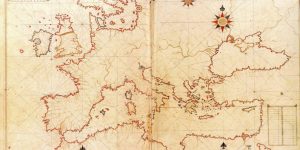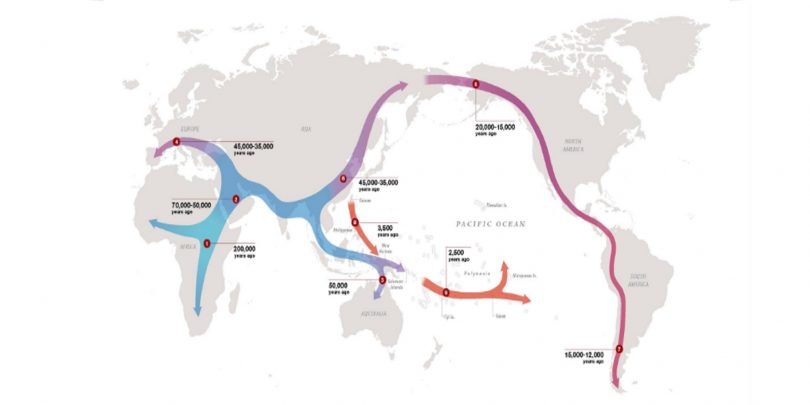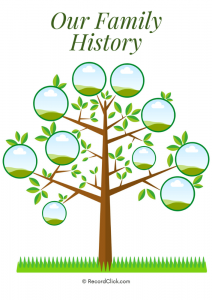Table of Contents
Ancestry migration patterns help researchers unravel the wanderings of ancient tribes, providing a unique perspective into ancestors’ lives and the legacy they left behind.
In fact, this is the surest way to prove whether that weird ethnicity percentage you received from your cultural ethnicity calculator is something to go by.
However, this kind of research is easy said than done, considering potential challenges spanning from elusive records to language barriers.
Luckily, we have formulated a guide to help you understand the essence of these patterns in your genealogy and how to start from scratch and give your research a solid direction.
Key Takeaways
- You may need to explore the patterns in your genealogy research to expand family connections, unravel cultural context, or understand history.
- Popular ancestry migration patterns in genealogy research include Ireland to America, westward expansion, and transcontinental migrations.
- Remember that you don’t have to embark on this journey alone-RecordClick is here to guide you on every step.
RELATED:
European Genealogy Back to the Old World
Why Are Ancestry Migration Patterns Important in Genealogy?

Ancient Europe
Uncovering the migration patterns used by your ancestors helps you understand the cultural currents flowing through your veins and the foundation upon which your family history lies.
Here are the main reasons why you may need to explore the patterns in your genealogy research
- Expand Family Connections: Your research path leads you to distant relatives and a new dimension to your family tree.
- Unravel Cultural Context: You can study the traditions, practices, and beliefs of the regions your ancestors migrated to or from to understand and appreciate their cultural values.
- Understanding History: When you conduct genealogy research based on the patterns, you also learn about important historical events, some of which could have triggered the migration. As a result, the patterns give you a better understanding of historical perspectives that shaped your lineage.
- Motivation: A long migration means studying the new challenges and hardships that emerged as your ancestors sojourned the terrains. Learning about your ancestors’ resilience through them is a boost to your morale and an inspiration to your family.
- Contemporary Significance: Learning about ancestral migration patterns helps you view your family from a societal perspective. This view gives your genealogy research a new dimension, making the findings valuable resource for your genealogy and your life.
- Time traveling: Learning and feeling the lives, struggles, and environments your ancestors endured connects you to a past experience. This empathetic exercise connects you with the ancestors’ human experience of pursuing greener pastures.
Popular Ancestry Migration Patterns in Genealogy Research
Popular routes that have defined history and helped researchers discover families include the Transatlantic pattern and the Castle Garden (also known as Castle Clinton), America’s first official center for immigrants entering New York City.
Let’s explore more trajectories that have defined the course of human history.
Ireland to America
In the mid-19th century, people in Ireland faced a deadly Irish Potato Famine that forced them toward the U.S., Canada, and Australia.
The large number of immigrants led to today’s Irish diaspora, which has reshaped the global demographic and made Irish traditions part of the American cultural fabric.
Immigration Waves
From the mid-19th century to the early 20th century, the United States witnessed the Ellis Island experience, characterized by a wave of Jewish, Italian, and Irish immigrants. These groups flocked to the American shores in search of a better life. They ended up contributing to the cultural vibrancy and diversity in American society.
Westward Expansion
The westward move happened in the U.S. during the 19th century. It was driven by need for economic prosperity, dreams of land ownership, and the allure of uncharted territories. For example, the Oregon Trail facilitated the exodus of countless families from the east coast to the fertile lands in the West, including California and Oregon.
Transcontinental Migrations
Migration patterns are not confined to a specific region-they cross continents. One somber pattern was used during the slave trade and significantly contributed to the African diaspora.
People were forcefully displaced from their homes and subjected to hardships across the Americas. The culmination of this legacy is evident in the dense African diaspora communities in the U.S., Latin America, and the Caribbean.
Modern Patterns
Globalization has triggered modern-era migration patterns as families relocate for education, work, or turning a new leaf. For example, Indian families have increasingly migrated to countries like U.S., Canada, and the U.K., resulting in a dynamic interplay of identities and cultures.
These patterns prove that research should not just see them as historical records but as legacies that influence modern life.
RELATED:
Immigration and Castle Garden – A Gateway to America
Tools You Need to Trace Ancestry Migration Patterns

Genealogy Research
Research on ancient patterns require a library of migration-specific resources with accurate accounts and demographics. Using these traces and accurately tracking your ancestry is a journey that involves a myriad of processes and steps.
Here are the essential resources for successful genealogy research.
Online Databases
The internet is flocked with sites offering genealogical information, including historical newspapers, census records, and relevant documents. Our review of the best genealogy websites and databases will help you know what is helpful and where to find it.
DNA Testing
DNA testing provides breakthroughs in genealogy research and helps complete the puzzle. Luckily, most online DNA testing service providers have a cultural ethnicity calculator with results that might help resonate with the migration pattern. Our review of the top two DNA testing companies will help you decide the best.
Genealogy Societies
Genealogy societies are vocal in addressing people’s concerns regarding their family heritage and how to go about the research. These genealogy communities comprise interested parties and fellow researchers ready to network and pursue a common objective.
So if you think your ancestors were among the Mayflower passenger, check if you qualify for the Mayflower Genealogy Society.
Libraries and Archives
Libraries such as the Library of Congress and University archives keep historical documents, maps, and photographs that can contextualize your ancestors’ migration patterns. In addition, you may find crucial letters and diaries that could offer first-hand accounts of the challenges and motivations your ancestors endured.
How To Trace Your Family’s Journey

Online Genealogy
Tracing the migration journey involves gathering information, consulting a professional genealogist to help interpret DNA results and expedite the process.
Here is a step-by-step guide on how to trace your roots through patterns.
- Start With What You Have: Gather readily available data, including photographs and interviews with close relatives, to build blocks for your research.
- Analyze Records: Look for leads and additional data from online databases and local archives. Be sure to focus on immigration records detailing passenger lists and arrival documents.
- Map Paths: Use the Land and property ownership records to trace the route taken by your ancestors and identify places they settled.
- Leverage DNA Testing: Your DNA results can help discover genetic markers for different regions and complement your understanding of migration patterns.
RELATED:
The Essential Role of Genealogists in Tracing Our Roots
Migration Patterns Offer a Voyage of Discoveries!
Tracing your roots through ancestry migration patterns forges a deep connection characterized by unexpected twists and a profound sense of belonging to a family lineage that spans centuries and continents.
Remember that you don’t have to embark on this journey alone-RecordClick is here to guide you on every step.
Our dedicated team of genealogists specializes in migration patterns and a research methodology tailored to your unique background.
Contact us today for a free consultation and embark on a journey that will enrich your understanding of your story.








